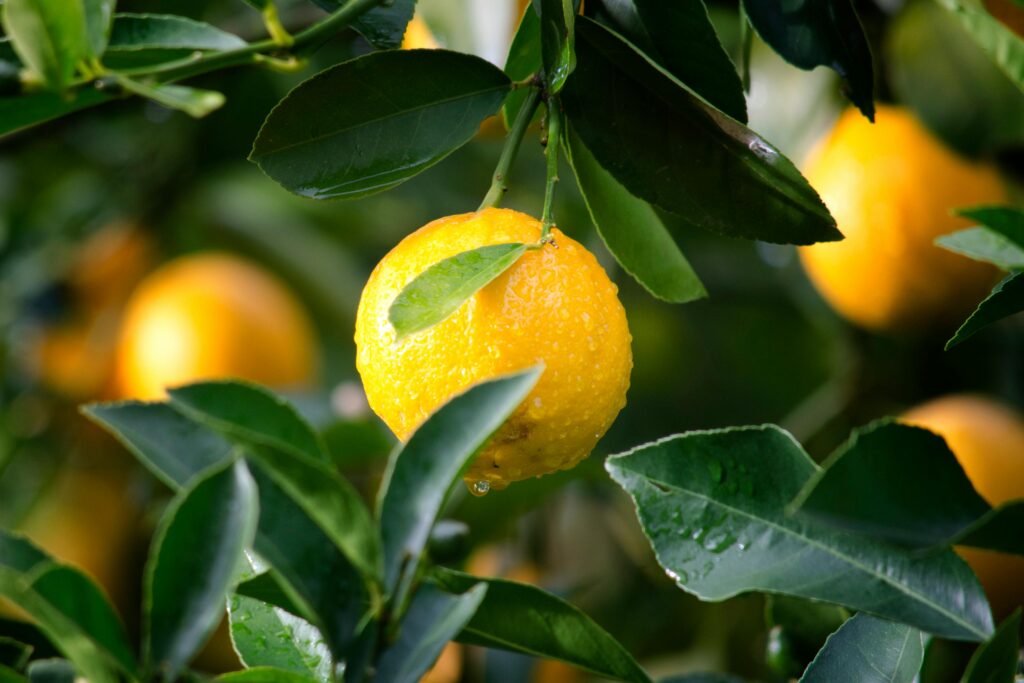Introduction
Indoor dwarf citrus trees, encompassing varieties like lemon, lime, and orange, are increasingly popular among gardening enthusiasts for their dual role as decorative houseplants and producers of fresh, tangy fruits. These miniature marvels, with their lush greenery and fragrant blossoms, not only uplift the aesthetics of any living space but also offer the unique satisfaction of homegrown citrus. This detailed review will delve into the essentials of nurturing these delightful trees, ensuring that even novices can enjoy the bountiful rewards of indoor citrus gardening.
Indoor Plant Details: Key Specifications
| Specification | Details |
|---|---|
| Common Names | Meyer Lemon, Bearss Lime, Calamondin Orange, Kaffir Lime |
| Botanical Name | Citrus x meyeri (Meyer Lemon), Citrus latifolia (Bearss Lime), Citrus × microcarpa (Calamondin Orange), Citrus hystrix (Kaffir Lime) |
| Family | Rutaceae |
| Plant Type | Fruit, Evergreen Tree |
| Mature Size | 3–6 ft. tall, 2–4 ft. wide (varies by type) |
| Sun Exposure | Full sun (6 to 8 hours of sunlight per day) |
| Soil Type | Well-draining, loamy |
| Soil pH | Slightly acidic to neutral (pH 6.0 to 7.0) |
| Bloom Time | Varies, often spring or early summer |
| Flower Color | White, often with a purple or pink tinge |
| Hardiness Zones | Generally 9–11 (USDA), can vary depending on the variety |
| Native Area | Asia, hybrid varieties developed worldwide |
| Benefit | Produces edible fruit, aromatic flowers, air-purifying, aesthetic appeal |
These specifications provide a snapshot of the indoor dwarf citrus trees, encompassing the most popular varieties like Meyer Lemon, Bearss Lime, Calamondin Orange, and Kaffir Lime. Each variety, while sharing common care needs, brings its unique characteristics to indoor gardening. From the Meyer Lemon’s sweeter fruit to the distinct leaves of the Kaffir Lime, these plants offer a delightful blend of ornamental beauty and practical benefit. Their ability to purify air and their compact size make them ideal for indoor environments, while their fragrant blossoms and the prospect of home-grown citrus add a special charm to any space.
Plant Care
Understanding the Basics: Dwarf citrus trees are not just plants; they are living entities that demand attention and care. The key to thriving indoor citrus trees lies in understanding their basic needs and ensuring these are consistently met. These trees thrive under specific conditions – conditions that mimic their natural habitat as closely as possible within an indoor setting.
Light
Sunshine Indoors: Citrus trees are sun worshippers. They require at least 6-8 hours of direct sunlight daily to flourish. South-facing windows are typically ideal, providing ample sunlight throughout the day. During winter months, when daylight hours are shorter, supplementing with grow lights can be beneficial. The correct light exposure not only promotes growth but also is crucial for flowering and fruit production.
Soil
Foundation for Growth: The choice of soil is pivotal. Citrus trees prefer well-draining, slightly acidic soil. A mix specifically designed for citrus plants, often available at garden centers, is ideal. This special soil mix helps in maintaining the right balance of moisture and air, essential for the health of the root system.
Water
Hydration with Care: Watering is a delicate balance. Citrus trees dislike both over and under-watering. The soil should be allowed to dry slightly between waterings. A good rule of thumb is to water when the top 2-3 inches of soil feel dry to the touch. Over-watering can lead to root rot, while under-watering can stress the plant, affecting its ability to bear fruit.
Temperature and Humidity
Creating a Comfortable Environment: Citrus trees prefer a temperature range of 65-85°F (18-29°C). They are sensitive to sudden temperature changes, so it’s vital to keep them away from drafty windows and doors. Humidity is also a critical factor. Indoor environments can often be dry, so maintaining a humidity level around 50% is ideal. Humidifiers or pebble trays with water can help achieve this.
Fertilizer
Nutritional Boost: Regular feeding is crucial for the health and productivity of citrus trees. Use a high-quality citrus-specific fertilizer to provide the right balance of nutrients. Fertilizing should be done during the growing season (spring and summer) and reduced in fall and winter when the tree’s growth naturally slows.
Pruning
Shaping Success: Pruning is not just about maintaining shape; it’s about encouraging healthy growth. Remove any dead or crossing branches and trim back excessive growth. Pruning helps in improving air circulation and light penetration throughout the tree, which is essential for its overall health.
Overwintering
Winter Care: As temperatures drop, indoor citrus trees need special care. Reduce watering and stop fertilizing. If possible, move the trees to a cooler, but not cold, location to mimic their natural dormant period. This rest period is crucial for the tree to rejuvenate and prepare for the next growing season.
Propagating Plant
Multiplying Beauty: Propagation of dwarf citrus trees can be done through cuttings or grafting. This allows gardeners to clone their favorite varieties. The process requires patience and care, but the reward of nurturing a new plant from its infancy is immeasurable.
Dealing with Quickly Declining Plants
Rescue and Revival: When a citrus tree is in distress, quick action is needed. Assess for signs of over or under-watering, pest infestations, or diseases. Adjust care routines accordingly. Sometimes, repotting into fresh soil or moving the plant to a different location can make a significant difference.
Types of Plants
Diverse Varieties for Every Taste: The world of indoor dwarf citrus trees is rich and varied. Common types include:
- Meyer Lemon: Known for its sweeter, less acidic lemons. It’s a prolific fruit producer and is relatively easy to care for.
- Bearss Lime: This type yields juicy, seedless limes and is well-suited for indoor growth due to its compact size.
- Calamondin Orange: A cross between a kumquat and a mandarin orange, it bears small, tart oranges ideal for marmalades or as a garnish.
- Kaffir Lime: Highly valued for its leaves in cooking, it also produces distinctively shaped fruits.
Each variety has its unique requirements, but the basic care principles remain largely the same.
Common Pests & Plant Diseases with Solutions
Preventing and Treating Common Ailments:
- Pests:
- Spider Mites: Manifesting as fine webs and yellowing leaves. Control with neem oil or insecticidal soap.
- Scale Insects: Appearing as brown bumps on stems and leaves. Treat with horticultural oil or by gently scrubbing with a soft brush and soapy water.
- Aphids: Small, green pests clustering on new growth. Use insecticidal soaps or a strong jet of water to dislodge them.
- 2. Diseases:
- Root Rot: Often due to overwatering. Prevent by ensuring proper drainage and only watering when necessary.
- Citrus Canker: A bacterial infection causing lesions on leaves, stems, and fruit. Control by pruning affected areas and applying copper-based fungicides.
- Mold and Mildew: Occurring in overly humid conditions. Improve air circulation and reduce humidity.
Regular inspection and prompt treatment are key to maintaining a healthy plant.
How to Get Plant to Bloom
Encouraging Flowering:
- Adequate Light: Ensure your citrus tree receives enough sunlight. Lack of light is a common reason for lack of blooms.
- Proper Nutrition: Use a balanced, citrus-specific fertilizer to provide the necessary nutrients.
- Stress Period: Sometimes, a slight stress, like cooler temperatures or a brief dry spell, can induce flowering.
- Pruning: Proper pruning can encourage the growth of flowering branches.
- Age of the Tree: Remember, younger trees or those grown from seed may take several years before they start to bloom.
Patience and consistent care are essential for a blossoming citrus tree.
Common Problems With Plant
Addressing Frequent Challenges:
- Leaf Drop: Often caused by overwatering, under-watering, or a sudden change in environment.
- Yellowing Leaves: This could be a sign of nutrient deficiency, overwatering, or inadequate light.
- No Fruit Production: Factors include insufficient light, lack of pollination (in some cases, hand pollination may be necessary), or the tree’s age.
- Pest Infestations: Regularly inspect for signs of pests and treat promptly to prevent serious damage.
Understanding and responding to these common issues can lead to a healthier, more productive citrus tree.
The Essence of Green Thumbs: A Conclusion
In conclusion, the cultivation of indoor dwarf citrus trees is a fulfilling endeavor that enhances both the aesthetics and the atmosphere of your home. With the right care and attention, these trees can be a long-lasting, fruit-bearing part of your indoor garden. Their vibrant presence
is a testament to the wonders of nature and the rewards of diligent gardening.
Frequently Asked Questions
Decode the magic of gardens with our guide to Landscaping Styles Frequently Asked Questions.
- Yes, you can grow citrus trees from seeds, but they may not produce fruit identical to the parent tree. Also, trees grown from seeds take longer to bear fruit.
- Yes, you can grow citrus trees from seeds, but they may not produce fruit identical to the parent tree. Also, trees grown from seeds take longer to bear fruit.
- Yellowing leaves can be a sign of over-watering, under-watering, nutrient deficiency, or pest problems. Assess your watering schedule and the plant’s overall health to determine the cause.
- Depending on the variety and conditions, dwarf citrus trees can take 3-5 years to start bearing fruit when grown from a cutting or graft. Trees grown from seeds may take longer.
Recent Posts
- Modern Mural Ideas Transforming Walls into Artworks
- Thematic Table Decor Dressing Your Table for Special Occasions
- Festive Lighting Ideas Brightening Your Home for the Holidays
- Biodegradable Decor Materials Choosing Earth-Friendly Options
- Personalized Space Decor Making Your Home Uniquely Yours
- New Year’s Eve Decor Ringing in the New Year in Style
- Transforming Junk into Decor Upcycling at Its Best
- Second-Life Decor Objects Giving Old Items New Purpose
- Unique Decoration Crafting Standout Ideas for Your Home
- Environmentally Friendly Styling Decor with a Conscience











